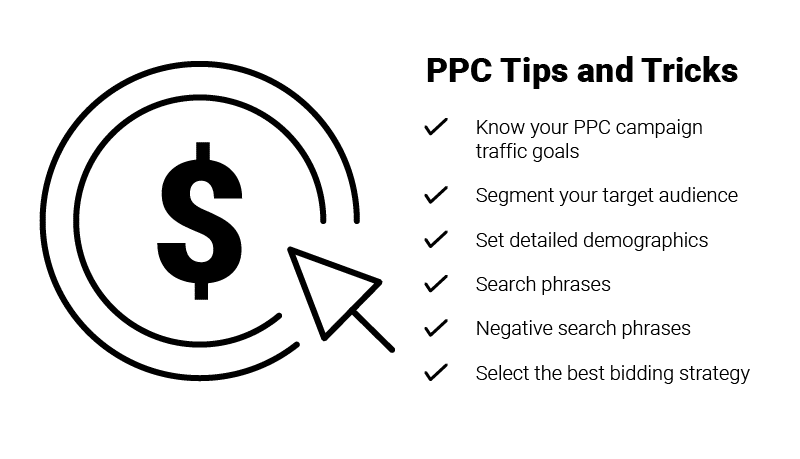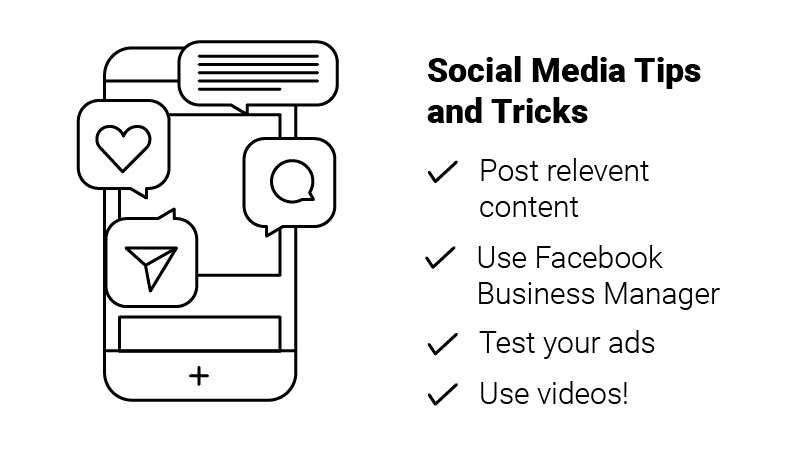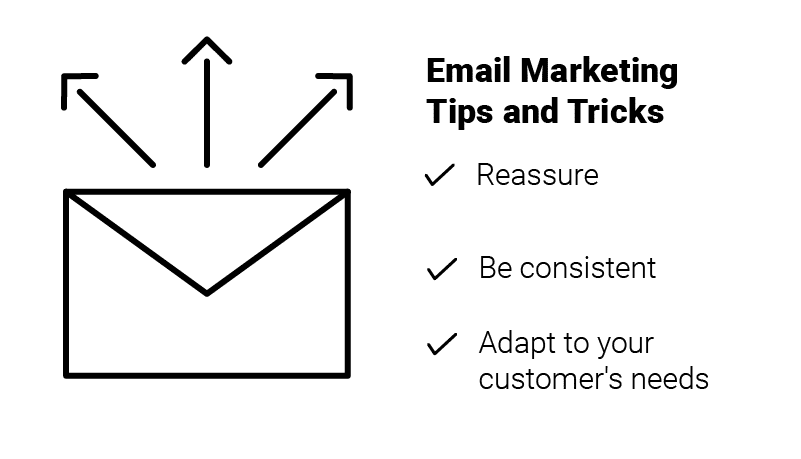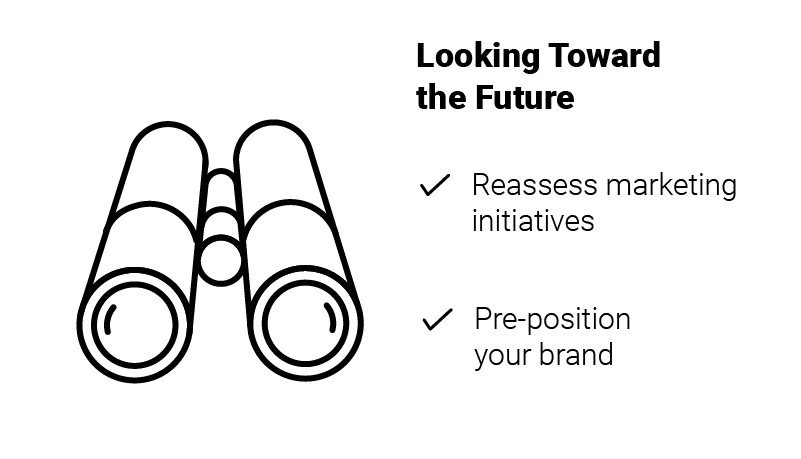Introduction
By now we are all fully aware of the Coronavirus / COVID-19 pandemic and how it’s impacting the local, national, and global economy. But how is it affecting your specific industry, and more importantly your business? And what should you do to not only keep things running but stay ahead of the curve? We’ll walk you through some proven digital marketing strategies that can help you navigate this time of uncertainty and move your business from reactive to proactive.
As we saw with the financial crisis in 2008, times of crisis, while difficult, also present an opportunity to step back, evaluate your business, and start planning for the future. That way, when things return to normal, you’re ready to hit the ground running. Here at Sproutbox, we’re already working with our clients to proactively ramp-up their marketing efforts to both stay ahead of the competition and be prepared when the markets bounce back.
So our advice is to sit down, take a deep breath, and start planning. You’re either working from a nearly empty office building or working from home – both of which can provide an atmosphere free from frantic meetings and frequent interruptions. Make this time count. We’ll show you how.

While the digital marketing industry isn’t entirely seasonal, we’ve regularly encountered slower times and found that pre-planning can be both therapeutic and highly productive. By strategically planning, you immediately vault your business ahead of the competition who likely have become bogged down by a sense of dread and pessimism. Don’t be that business. This crisis isn’t going to last forever and in today’s digital age, there’s plenty of work to be done.
Digital Marketing Opportunities in Hard Times
It’s easy to become stagnant and paralyzed by fear of the unknown during hard times. Don’t worry, it’s a natural reaction that we all feel in the middle of a crisis. It’s how you deal with that reaction and what you do next that counts. The businesses who scale back and compromise their values are the ones that will suffer the most. It’s the businesses who strategically plan and ramp-up their efforts that will benefit the most.
So what are the digital marketing opportunities available to your business in hard times? Most of these opportunities are centered around the new reality that an influx of people are using the internet even more frequently during a crisis like the Coronavirus. They’re stuck at home on their phones, tablets, or computers navigating the internet for news, helpful information, and online shopping. Let’s take a look at some of the most effective digital marketing opportunities below.
The Short-Term
What can you do right now? The first opportunity is to outline a strategic plan that addresses both your immediate and post-crisis business needs. To get started, we recommend answering a few helpful questions:
- What are you doing to stay in front of potential and current customers?
- How are you communicating with your customers and what are you saying?
- What value can you provide your customers in the short-term?
- How can you reallocate budget to maximize efficiency?
How you answer the above questions will inform what short-term strategies are most appropriate for your business. We recommend answering these questions physically, either with pen and paper or on a whiteboard. Start by going through them alone, then bring in others to discuss your results and brainstorm other creative solutions. Below are some potential quick-start digital marketing strategies to consider.
Quick-Start Strategies
Google Pay Per Click Advertising
Pay per click (PPC) advertising is a great way to generate business quickly. With more people working from home and spending time online, there is a greater opportunity to reach your potential customers on Google. Unlike Search Engine Optimization (SEO), PPC can get your business to the top of search results immediately. And as the name suggests, you only pay for the people who click to your landing page. Because of its immediate effectiveness and quick results, it’s a great strategy for testing. We suggest running A/B split tests with different ad types and messages for 2-4weeks. Whatever ad is performing best will be split into another optimized A/B testing scenario. If you’re not sure how to get started, consider reaching out to a digital marketing agency for consultation or management.
You can also learn more from our recent blog article: 7 Tips for Advertising with Google Adwords.

Tips and tricks
- Know Your PPC Campaign Traffic Goals
Goals are the foundation of your marketing strategy. Your goals will lead you to select the best campaign type for your business, which will lead you to create the optimum tactic for achieving your goals. - Google breaks down campaign types like this:
- Sales: Display, Search, Shopping
- Website traffic: Display, Search, Shopping, Video
- Leads: Display, Search, Shopping, Video
- Product and brand consideration: Display, video
- App promotion: Universal App
- Brand awareness and reach: Display, Video
- Segment your Audience
Segment your Audience. Don’t try to have your ad appeal to everybody-craft custom content and messaging to different audience segments. Understanding the intricacies of your audience’s behavior and preferences will help you get the right message to the right people. Think about what your audience’s priority of needs, wants, desires, intentions, and demographics. - Set Detailed Demographics
Explore the many options the PPC platforms make available, such as, marital status, parental status, home-ownership, education, household income. Demographics vary per the campaign type and are updated frequently. Be sure to regularly review what demographic options are available for all of the PPC platforms that you are using. - Search Phrases (Keywords)
Research and select relevant search phrases (also called keywords) to your message. These are keywords are phrases your audience is currently using to find your products are service. Often PPC campaigns are structured around generic search phrases that will attract a more significant volume of clicks that might not all be interested in buying. You can waste much of your marketing budget investing in generic keywords. In most situations, longer tail keywords tend to attract people looking for a specific result, or those closer to a buying decision. Long-tail search phrases that typically have 3+ words as part of the search phrase. Reports suggest that targeting long-tail keywords can result in boosting conversions by up to 30%. - Negative Search Phrases (Keywords)
Adding negative keywords can be a very effective way to optimize your PPC campaigns. You are removing your ads from showing and thus potentially being clicked for search phrases that are not targeted to your product or service. - Clarify your Message
- Refining and clarifying your message will help you communicate the best possible message to your audience. There’s a minimal amount of time and space to get your message across, so utilize it wisely.
- Create brief ads that speak to the various audience segments that you identified earlier and use the search phrases that you selected.
- Create new or optimized existing landing pages to be tightly related to the search phrases and ads that your audience will be seeing. The higher the relevancy of the keywords, ads, and landing pages, the better your ad campaigns will perform for you.
- Select the Best Bidding Strategy
- Manual Bidding
- Automated Bidding
- Target Search Page Location
- Target Outranking Share
- Maximize Clicks
- Smart Bidding
- Enhanced CPC
- Maximize Conversions
- Target CPA
- Target ROAS
- Other Methods for Managing Bids
- Bid Adjustments
- Bidding Rules
- Bidding Scripts
Social Media Advertising
There’s no question that social distancing and isolation have increased social media usage globally. But surprisingly, some companies have also reported increases in social media ad campaign performance. While people may be going to social media for a sense of community and news updates, they’re also willing to engage with advertisers.
Social media advertising can be an incredibly effective way to reach your target audience with your product or service. The key here is to build out your audience’s interests and behaviors. It may be helpful to conduct a quick interview with a previous customer or client who is representative of the type of person you’d like to engage with. Understanding their priorities, hobbies, thought leaders, and preferences will help you find others like them.

Tips and tricks
- Relevant Content
Create relevant content that is appropriate for the current global crisis. If you’re a CBD company, advertise your ability to help maintain peace and calm. If you’re pizza company, spread the word about your Pizza + Toilet Paper deal. If you’re a digital marketing agency, push people to a resource that will help them grow their business in turbulent times.
Here are some other practical tips for social media advertising. For more information, check out our Social Media Advertising 101 blog post. - Facebook Business Manager
Instead of promoting posts on Facebook or Instagram, set up a Facebook Business Manager account and run ads through this platform. You’ll have the ability to customize your audience with much greater detail and test different ads. - Test Ads
Just like Google PPC, we suggest running a few ad sets to test the results before putting your entire budget on one campaign. Try out different mediums – photos, photos with graphics, color blocks, videos, memes. Test out different captions – direct calls to action, witty stories, quotes from previous customers. Run test ads at $5/day for 10 days and pick a winner to put real ad dollars behind. - Video, video, video
Not only does video content produce better engagement, it also gives you more insight. Using a video as an ad, you can see how many people watched 50%, 75%, or 100% or your ad. You can even set up follow-up ads to those groups of people. To the group that watched 50%, you can send an ad that continues to inform or inspire. To the group that watched 100%, you can send a call to action assuming they’re more ready to convert.
Email Marketing
While the two previous strategies have focused on finding and converting new leads, email marketing focuses on communicating to your existing audience. This is a great opportunity to build a deeper relationship with your audience through email, ensuring that you are available to support them. Get creative with how your company can be supportive in these turbulent times. Offer free advice, major discounts, entertainment, inspiration, or anything to help encourage your list. Email marketing is a relationship and going through difficult times with your audience is part of that. Transparency is key here. Including a webcam video from your CEO’s home office ensuring customers that they’ll be taken care of can break down the walls between you and your audience.

Tips and tricks
- Reassurance
Communicate to your audience what you’re doing to help minimize the effects of this virus within your business. If appropriate, you can even give encouragement around how your industry will bounce back from this and how you will get through it together. Empty words will fall short. Be honest, straightforward, and empathetic. - Consistency
Things are changing so rapidly that an email can become irrelevant much more quickly than before. Keep your audience up to date with new insights, deals, and personal messages consistently. - Changing Needs
With a rapidly changing market comes rapidly changing consumer needs. Cater your offering to the current needs of your audience and act quickly to make sure the right message is being received at the right time.
The Long-Term

Reassess Marketing Initiatives
Down times for companies provide a great opportunity to take a step back and reassess all high-level marketing efforts. Every Holiday season when business slows down, we hold vision meetings to learn from the previous year and clarify goals for the upcoming year. While it may be over a Zoom call, it’s important to get the right people together to have these conversations. We recommend blocking out a half-day to work through some questions and exercises, discuss strategy options, and set goals.
Here are some high-level strategy questions and exercises that can help get the conversation started.
- Company Timeline
On a whiteboard or large piece of paper, draw out a long line. Starting at the very beginning of your company’s existence, mark important events or milestones that have impacted where your company is today. Some examples may include: founding date, merger or acquisition, new product launch, important hires, or industry events. This exercise will help you step back and see your company’s growth up to this point and may inform the best strategy options going forward. - Old World vs. New World
This exercise helps to define a new direction of a campaign, an offering, or even a company as a whole. You’ll compare how things used to be (old world) with how they will be in the future (new world). Draw two overlapping circles as a venn diagram. Label the left circle as Old World and the right as New World. Let’s use a company’s social media tone and voice as an example. On the left side, write out adjectives associated with the old way of how your brand spoke on social media – characteristics you want to leave in the past. i.e. Authoritative, dry, dull, rambling, exclusive, too specific. Now move to the intersection – what are the qualities that you’d like to maintain? I.e. Informative, creative, unique. On the right side, write out the new way of communicating on social media. I.e. Innovative, fresh, fun, engaging, inclusive, etc…
Pre-positioning
The market will eventually rebound from this economic downturn. Pre-positioning your brand to be ready for returning business is vital. Make sure that your company is equipped with a well-rounded marketing strategy to make the most of a recovering market.
We recommend talking through the specifics of your marketing initiatives, whether you are currently utilizing them or not. Consider the following initiatives:
- Website content – Make sure your website has the correct marketing messages with appropriate calls for action.
- SEO – Check your current organic search rankings and optimize them for search engines to raise the caliber and quantity of visitors to your website.
- Content marketing – Plan out the short-term and long-term plan for blog posts and email communications.
- Marketing materials – Keep your designers busy by getting ahead of deadlines for print assets like brochures, posters, and presentations.
- Social media engagement – Ensure you have a consistent and responsive voice on social media for the short-term. For the long-term, plan out the monthly, quarterly, and annual strategy for your social media content.
- Video – Consider how video content could help your website conversion, social media engagement, or advertising performance. Think about both short-form and long-form video content and how you can best connect with your audience.
Conclusion
While we may still be in the early stages of this crisis, time is of the essence. It’s crucial that you start outlining and implementing your plan moving forward. Don’t wait for the tides to turn or for the stock market to rebound. Take a leap of faith and execute your plan because the longer you wait, the less opportunity you’ll have to beat your competition to the proverbial punch.
Our primary ethos here at Sproutbox is to “do the right thing”. We want to help the local economy and community both survive and thrive through this difficult time. Whatever happens in the coming weeks and months can be mitigated by calm heads, strategic planning, and proactive execution. We’ll be implementing these strategies here at Sproutbox and we encourage you to join us because we’re all in this together. Let’s get after it.
